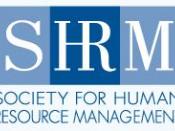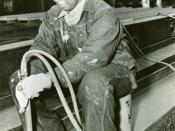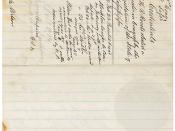Human Resource Management - Hiring and Recruitment
÷ Trade-off between highly-skilled and less-skilled workers
÷ In equilibrium, the wage spread between high and low quality workers would be large enough that no firms hiring low-quality would switch to high-quality and vice versa
÷ This happens at a national level, but firms must decide on high-quality or low-quality worker
÷ The quality and qualities of workers should fit the firm's strategy, culture, technology and environment
÷ For example, Toys R Us is a large-volume, low-cost, no frills firm, hence would not want to attract the same sales personnel as a high-quality toy retailer such as Schwarz
÷ But, must adhere to the general rule that a firm must choose the type of labour that minimises cost per unit of productivity
÷ The most cost-effective labour is the type that has the lowest ratio of salary to output
÷ Use ratios as more comparable than absolute differences
÷ Once a firm has determined the type of desirable worker, must determine hiring strategy
For example, can hire a machine, or another secretary
Machine: Costs ã500/month and produces 6,000 pages per year
Secretary: Costs ã800/month and produces 12,000 pages per year
Machine: 9,600/12,000 = 0.8
Secretary: 6,000/6,000 = 1
Employ the secretary, as benefits are greater per unit of cost
OR:
Machine: 12,000/9,600 = 1.25/page
Secretary: 6,000/6,000 = 1/page
Employ the secretary, as benefits are greater per unit of cost
Marginal Revenue Product
÷ As more people are hired, the value of each worker to the firm falls - principle of diminishing marginal productivity
÷ The firm should continue to hire workers as long as the increment to profit brought by hiring the worker is positive
Output increases associated with adding one worker, so long as the value of output from an additional worker...


